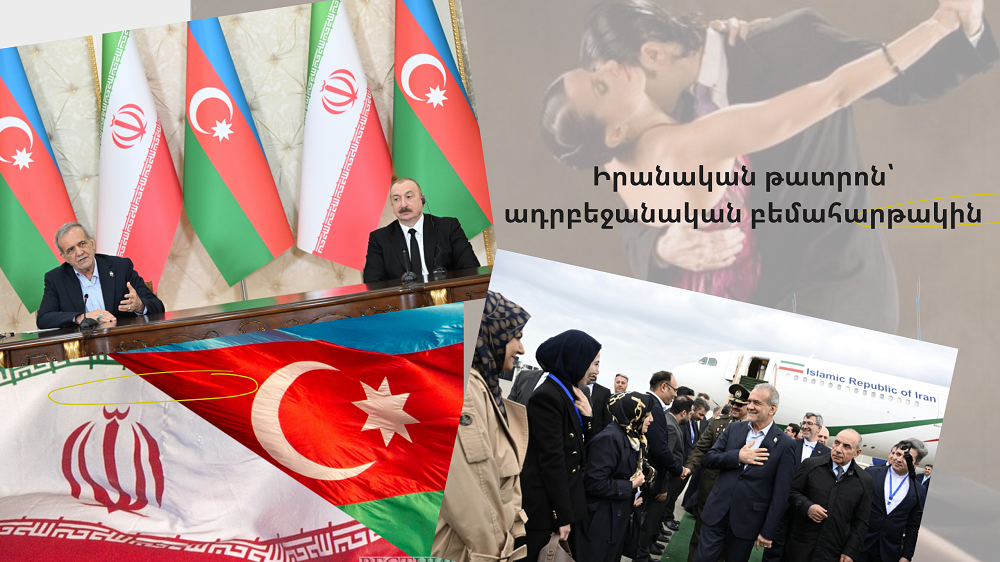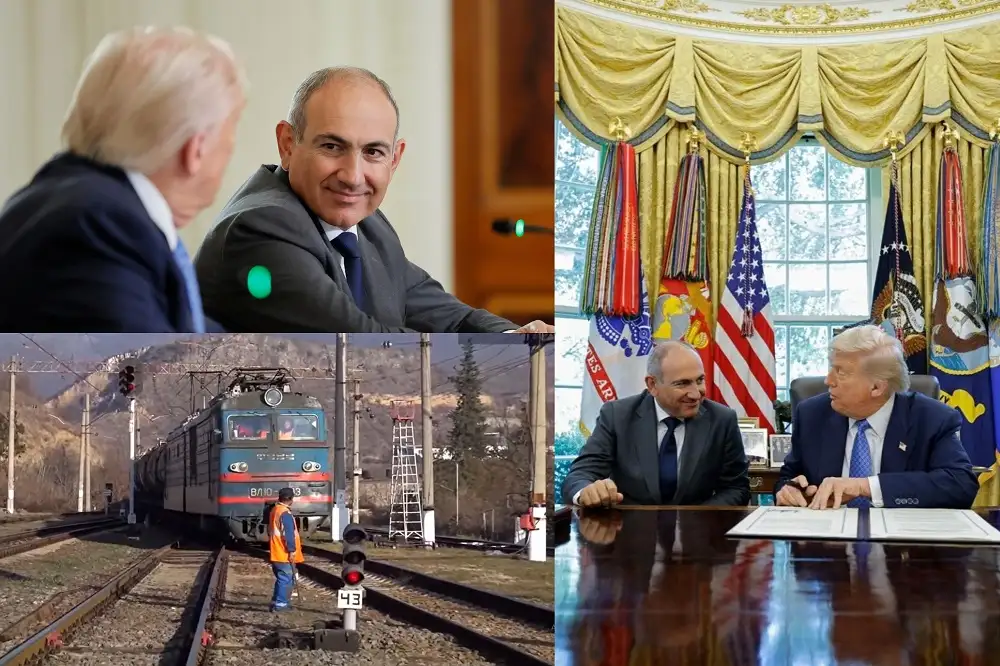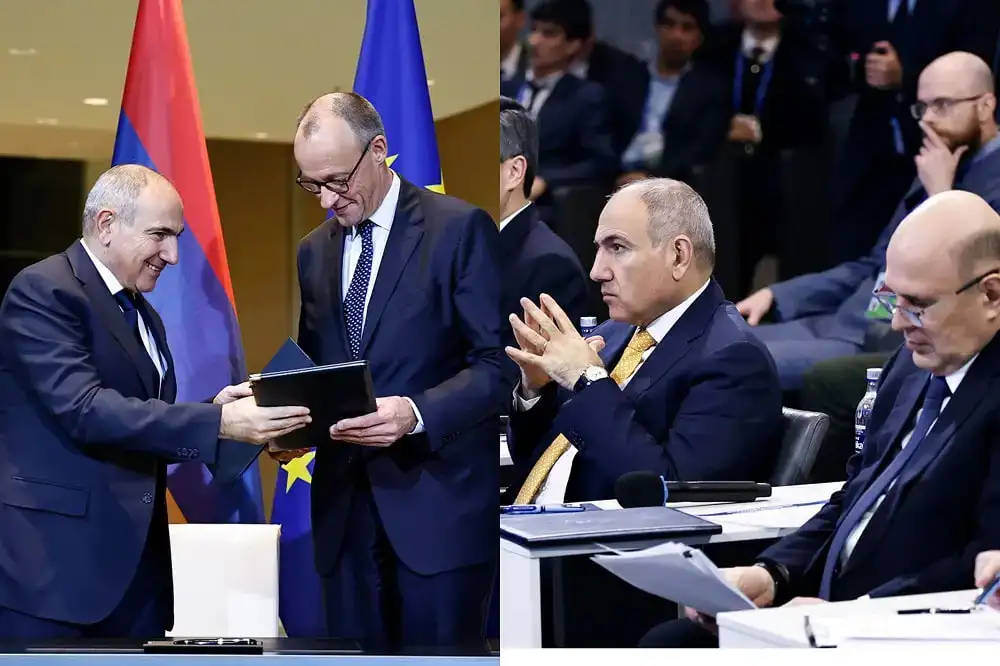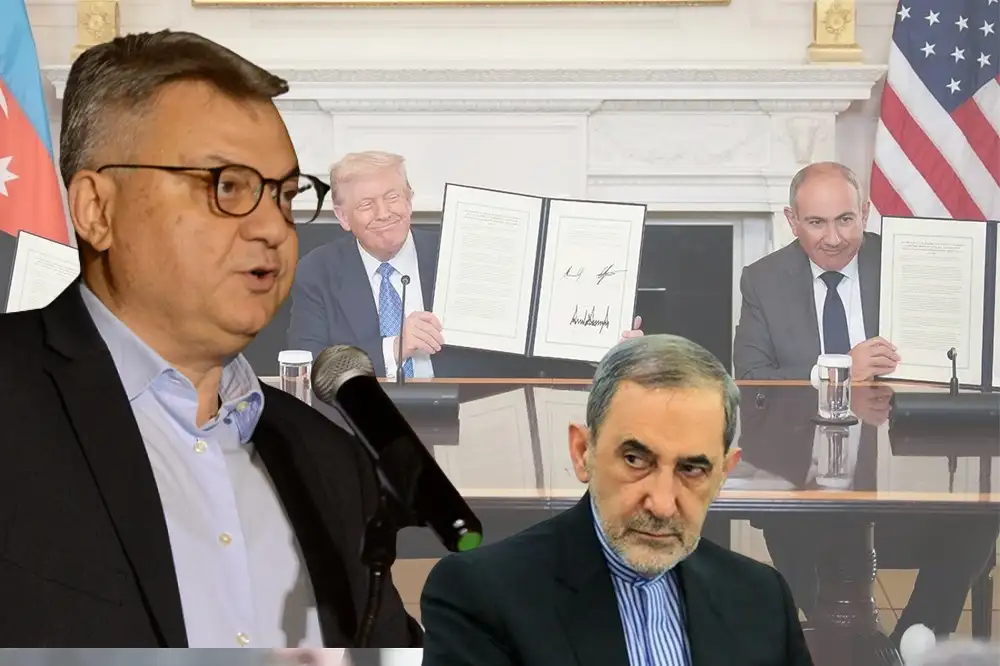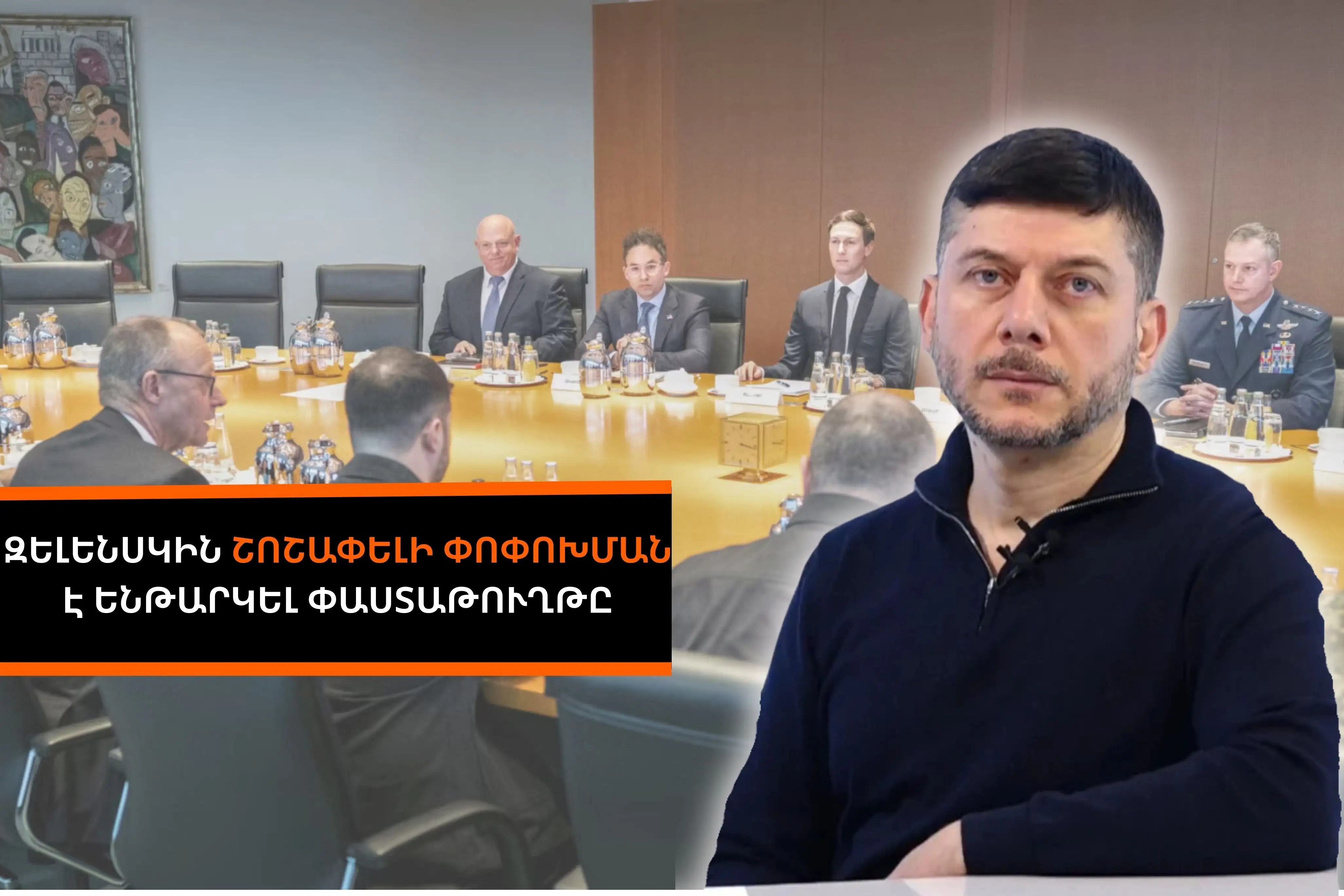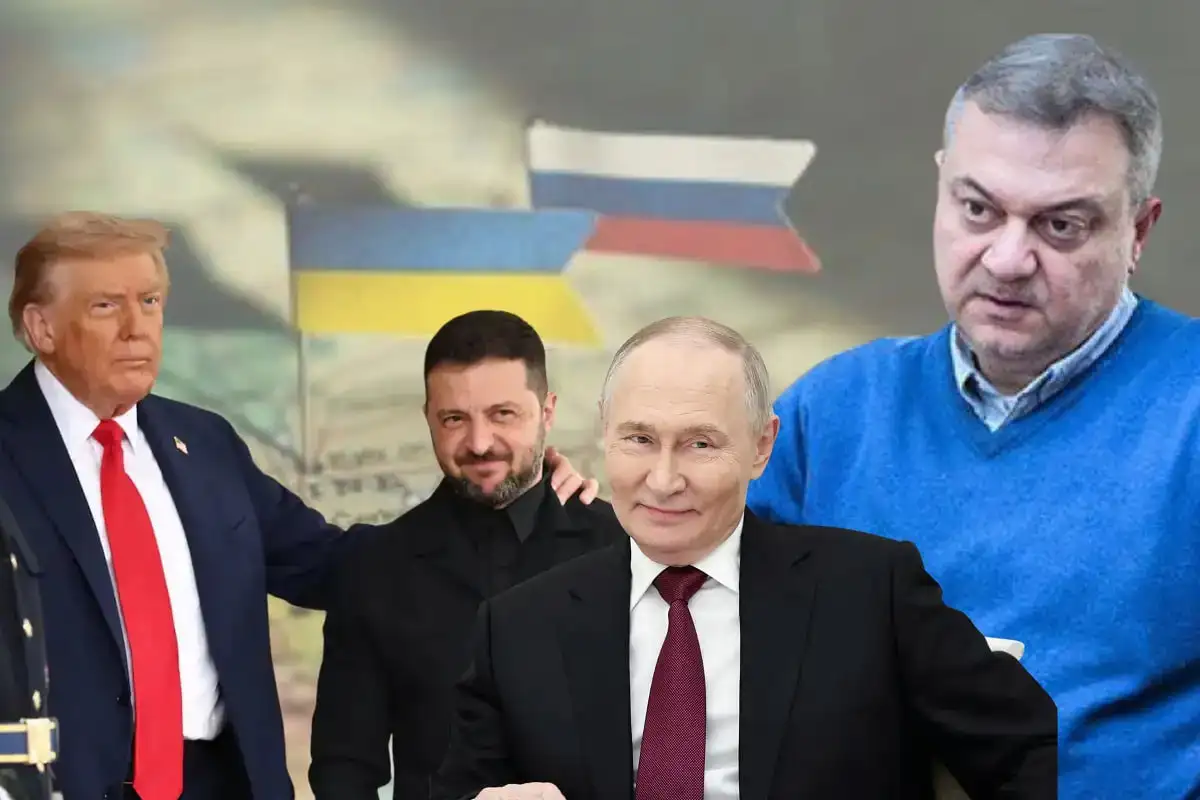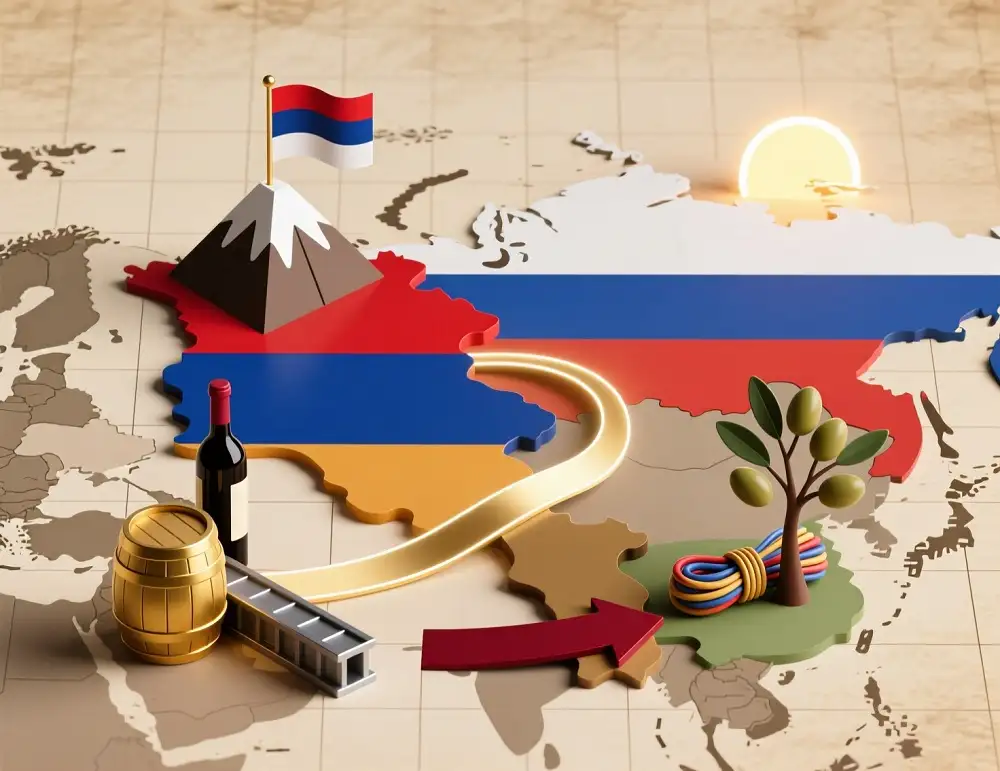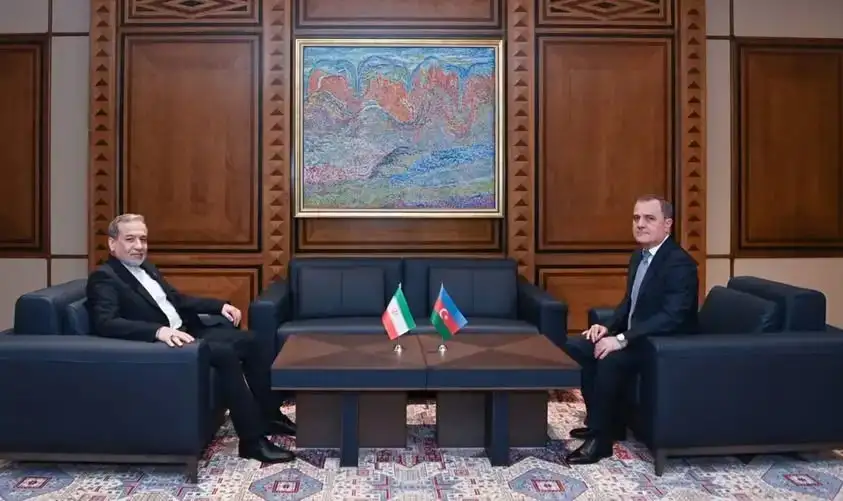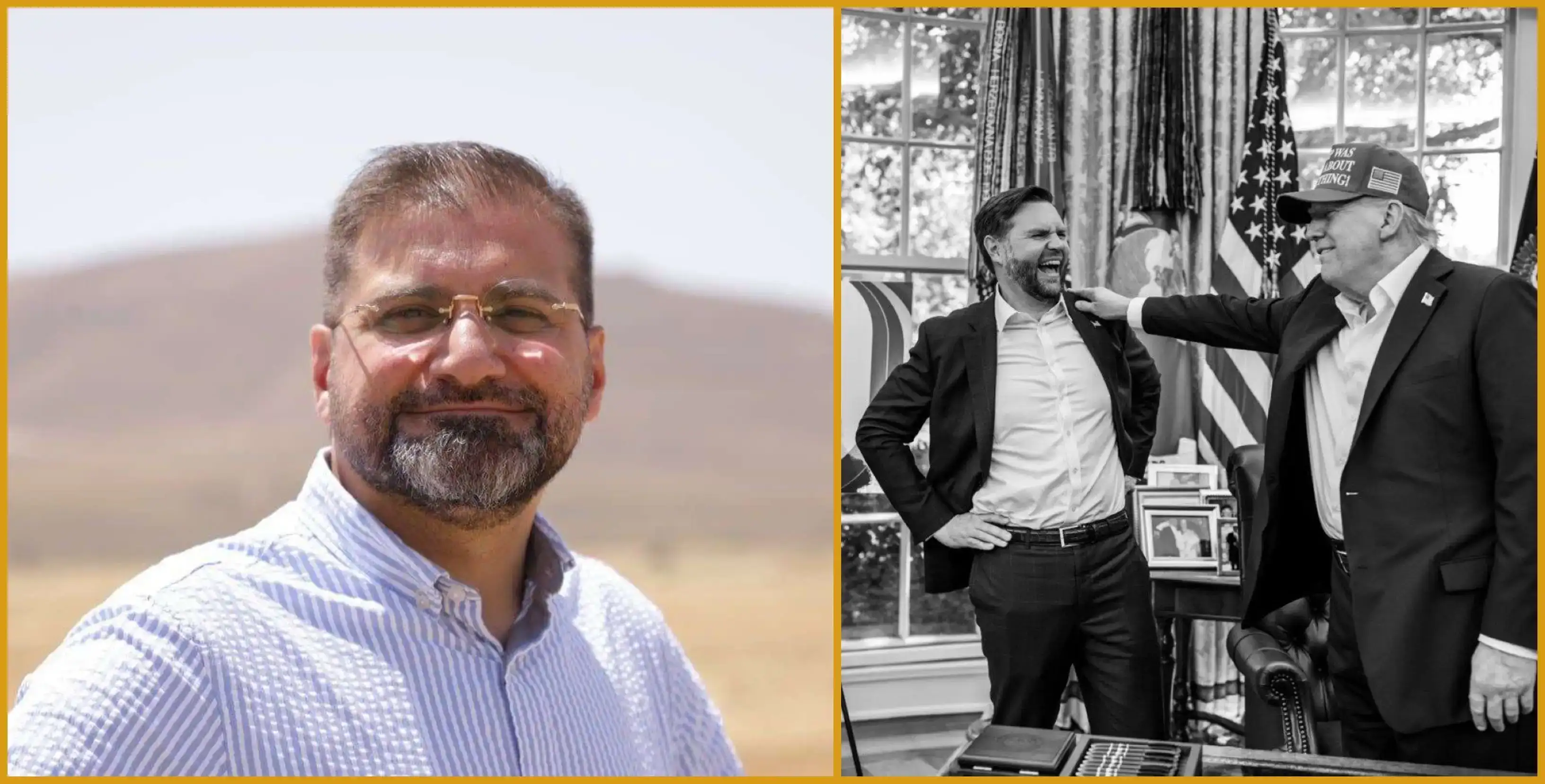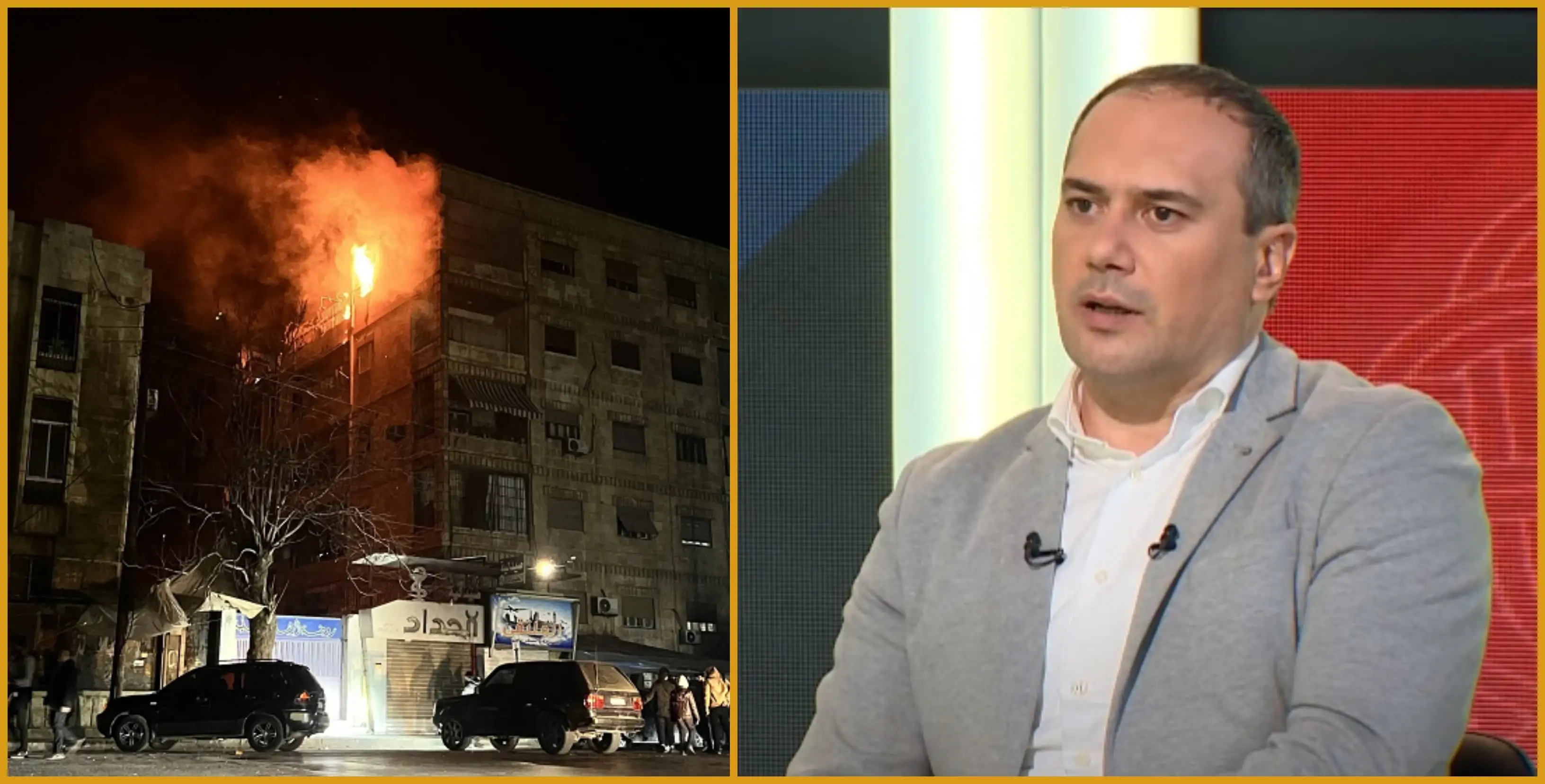Iranian President Masoud Pezeshkian paid a one-day visit to Azerbaijan on April 28, considered a delicately crafted Iranian diplomatic "presentation."
The artificial shine of Pezeshkian's visit
Initially circulating information that Pezeshkian was leaving for Baku with a delegation of about 150 people, Tehran tried to provide a PR backdrop of historical or strategic significance for that visit. Within the framework of the visit, seven memorandums of understanding were signed between the two countries, which relate to the spheres of healthcare, media and investments, political consultations, cultural exchange, and transport.
In addition, the Iranian president made several unpleasant statements in Baku that were unpleasant for the Aliyev administration. Pezeshkian stated that Karabakh is an integral part of Azerbaijan, and they treat it with respect. During the meeting with Aliyev, he hinted at "the rights of Azerbaijanis in Karabakh and other territories," perhaps referring to Baku's narrative about the right of return of ethnic Azerbaijanis who had left Armenia in time.
In his microblog, referring to his visit to Azerbaijan, Masoud Pezeshkian even called Aliyev "his beloved brother" and added that "the visit is a prelude to strengthening trust and opening new horizons…"
In other words, official Tehran did everything to give the visit a special significance. However, looking deeper, one can see that nothing special happened at the public level. This is not the first time Tehran has spoken about Karabakh being part of Azerbaijan; nothing is new. No direct claims have been made about the return of Azerbaijanis to Armenia. Therefore, the problem of pleasing Baku's ears with general phrases has been solved. As for the signed documents do not contain any strategic novelty and concern relations typical of any neighboring countries that are in more or less normal relations. In addition, almost all documents are at the level of memoranda.
Moreover, in connection with the issue of the "Zangezur Corridor," which is of fundamental importance for both Azerbaijan and Iran, it was in Baku that Pezeshkian reiterated Tehran's principled position on the inviolability of regional borders and respect for the territorial integrity of the countries. In other words, it is unlikely that any turning and unexpected shifts related to Armenia's interests have been recorded behind the scenes in this issue. This is also evidenced by the fact that during the visit, the importance of providing routes connecting the western regions of Azerbaijan to the Nakhichevan Autonomous Republic through Iranian territory was emphasized, and for this purpose, the agreement to build a bridge over the Araks River was agreed upon.
The question arises: in that case, why does Tehran need this "presentation?"
"Chestnuts" to External and Internal Audiences
In essence, Tehran is thus trying to solve two main problems.
First, Iran and Azerbaijan should change the current cold tone as much as possible. Iran is trying to restart dialogue to restore the balance of relations.
In addition, Tehran must understand Baku's positioning in the context of its confrontation with the US and Israel and the crisis over its nuclear program. Iran hopes to secure its northern rear by weakening the prospect of Baku becoming a "pivot" in Israel's anti-Iranian calculations through "friendly diplomacy."
Tehran had previously initiated such a preventive measure against Russia. Pezeshkian's visit to Baku was preceded by the April visit of Iranian Foreign Minister Abbas Araghchi to Moscow. In the case of both Azerbaijan and Russia, Tehran has no confidence that Moscow will not strike from behind in the context of the recent US-Russian rapprochement. Arakhchi was trying to find guarantees of loyalty in Moscow consistent with their strategic partnership. Now it is Azerbaijan's turn. Iran is trying to make Baku's behavior more predictable and reliable, disguising this pragmatic expectation under the guise of a "sincere policy of kinship."
Second, to accumulate "loyalty capital" in Iran's large Azeri community. Iran understands that at some stage of the deepening conflict with the US and Israel, this ethnic community can be used as a tool to destabilize Iran from within and, if possible, explode it. Considering how sensitive this mass is to Iran's relations with Azerbaijan, Tehran has decided to play the "card" of Masoud Pezeshkian's Azeri origin. It was no coincidence that Pezeshkian addressed Aliyev as "dear brother" in Baku. He also stated that he feels at home in Azerbaijan, and Iran is the homeland of Azerbaijanis. This is a calculated tactic to reduce the risks of internal division due to the intervention of external players in the face of growing challenges.
Israel's presence in Baku and Azerbaijan's undisguised corridor ambitions towards Meghri remain a concern for Iran, equally risky issues. No matter how much Tehran tries to empty Azerbaijan's demand for the "Zangezur Corridor" by providing Azerbaijan with a route through Iranian territory to Nakhichevan, it does not prevent Baku's deep ambitions for the simple reason that Meghri is not a mere uncontrolled transport hub in their geopolitical ambitions but rather a key link in the land backbone of the Turkic world, to the detriment, first of all, of Iran.
Will Armenia provide the melody of the Azerbaijani-Iranian duet?
It is clear that Tehran also realizes this. Still, the vital need to exclude escalation in Syunik may prompt Tehran further to strengthen its economic and communication ties with Baku to increase the latter. This is as positive as it is harmful to Armenia because, in this way, Baku, in turn, will try to appropriate all regional economic, energy, and communication projects, bring Iran into the sphere of its interests, and thus deepen Armenia's isolation. The fact that the main substantive conversation in Baku was concerned with joint communication and economic projects became clear from the information accompanying the visit.
This signals to Armenia that Yerevan should not remain an observer in the Iran-Azerbaijan games. The primary way out of this status is to put its model of the "Crossroads of Peace" into practice, calculating the interests of all potential beneficiaries—Iran, India, Arab countries, and the EU—with realistic proposals for profitable transport, energy, and customs solutions and the resulting investments.
Of course, two people dance the tango, but who provides the weather is very important.
Gor Abrahamyan




